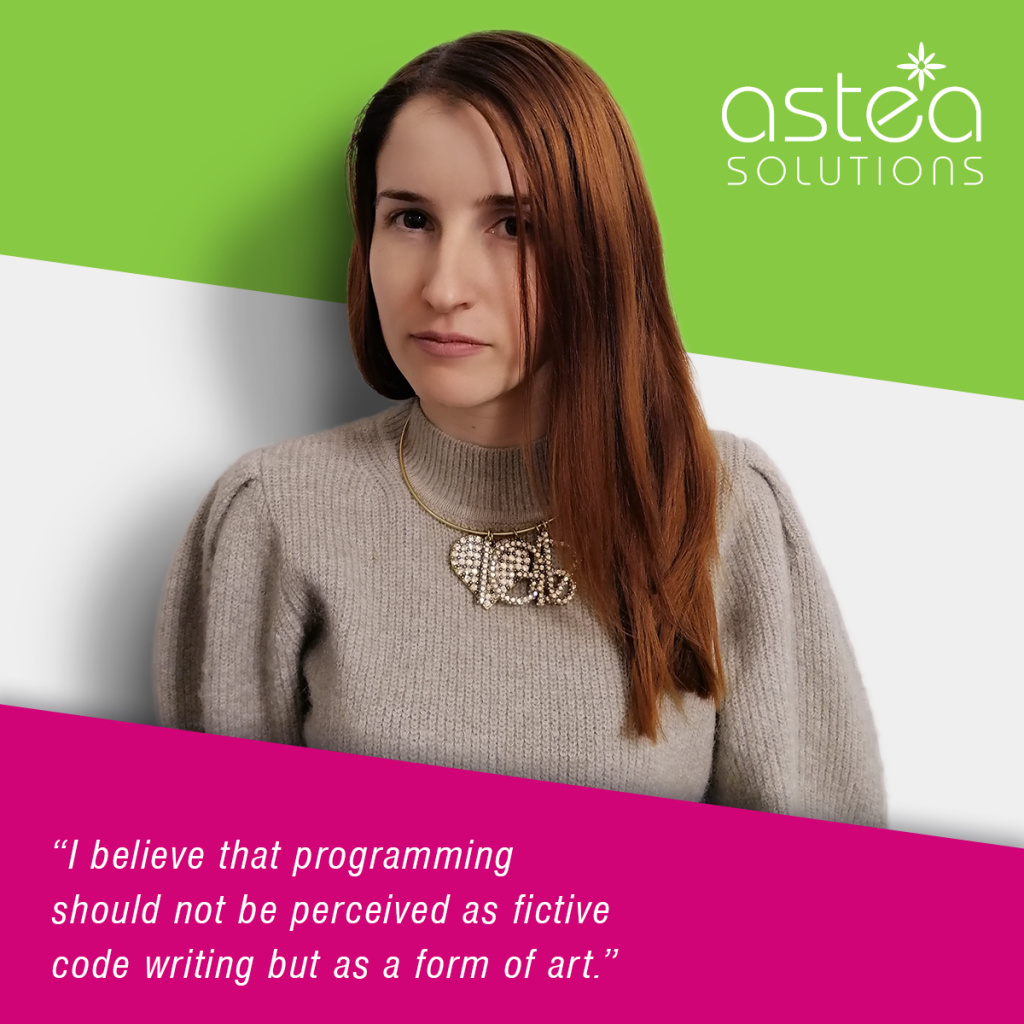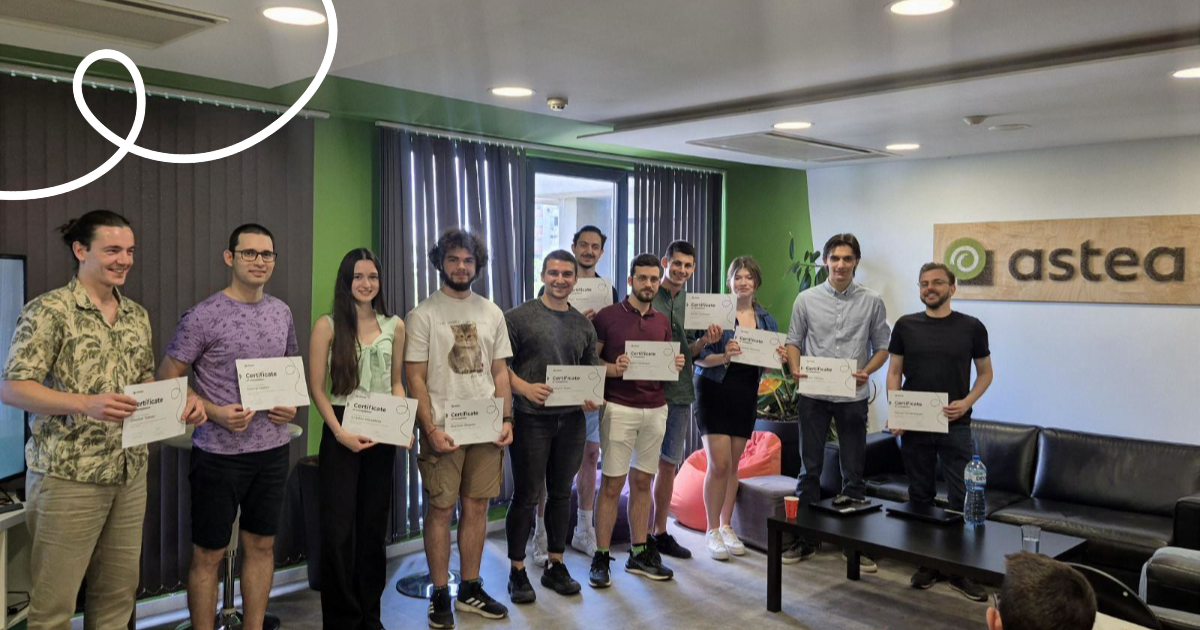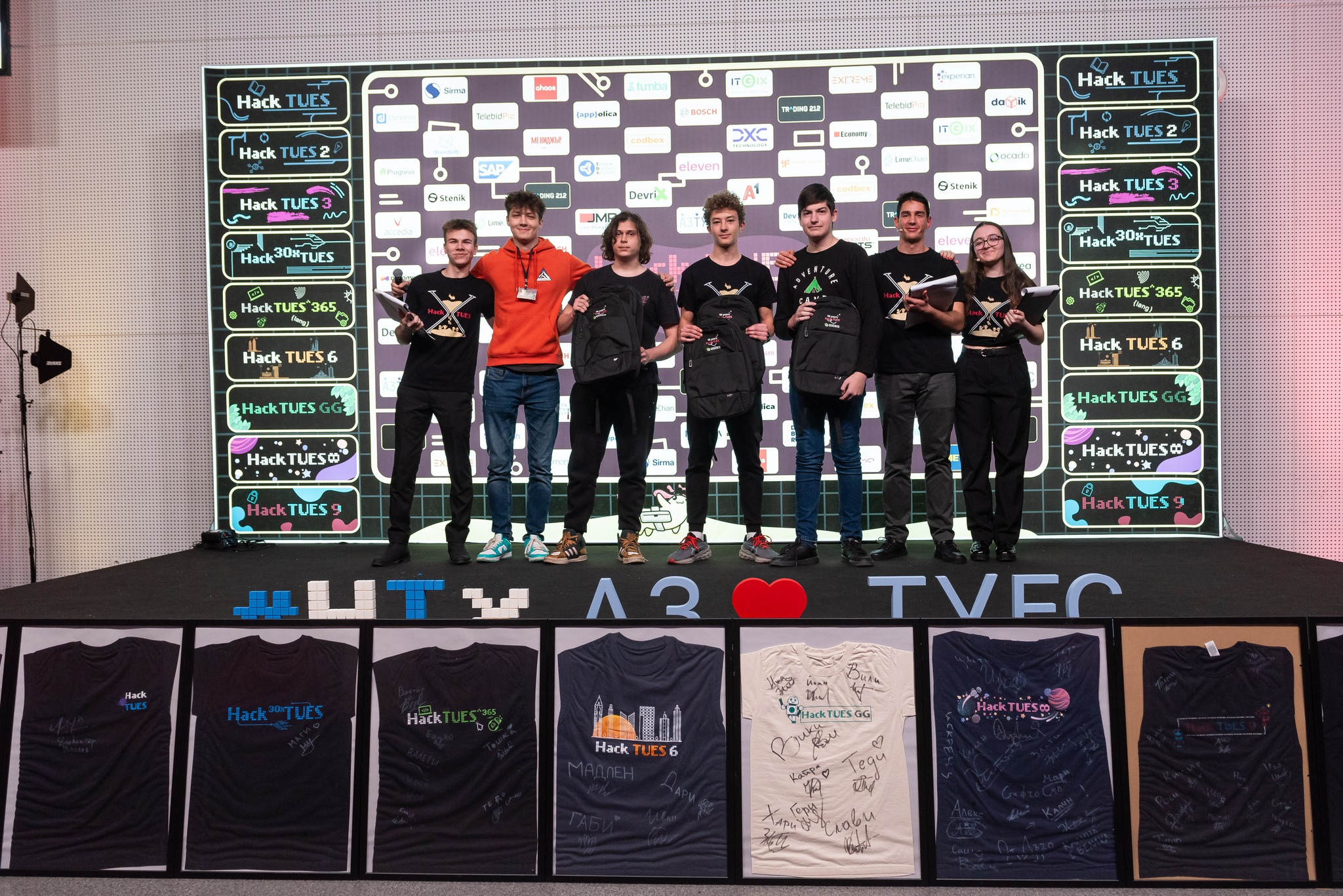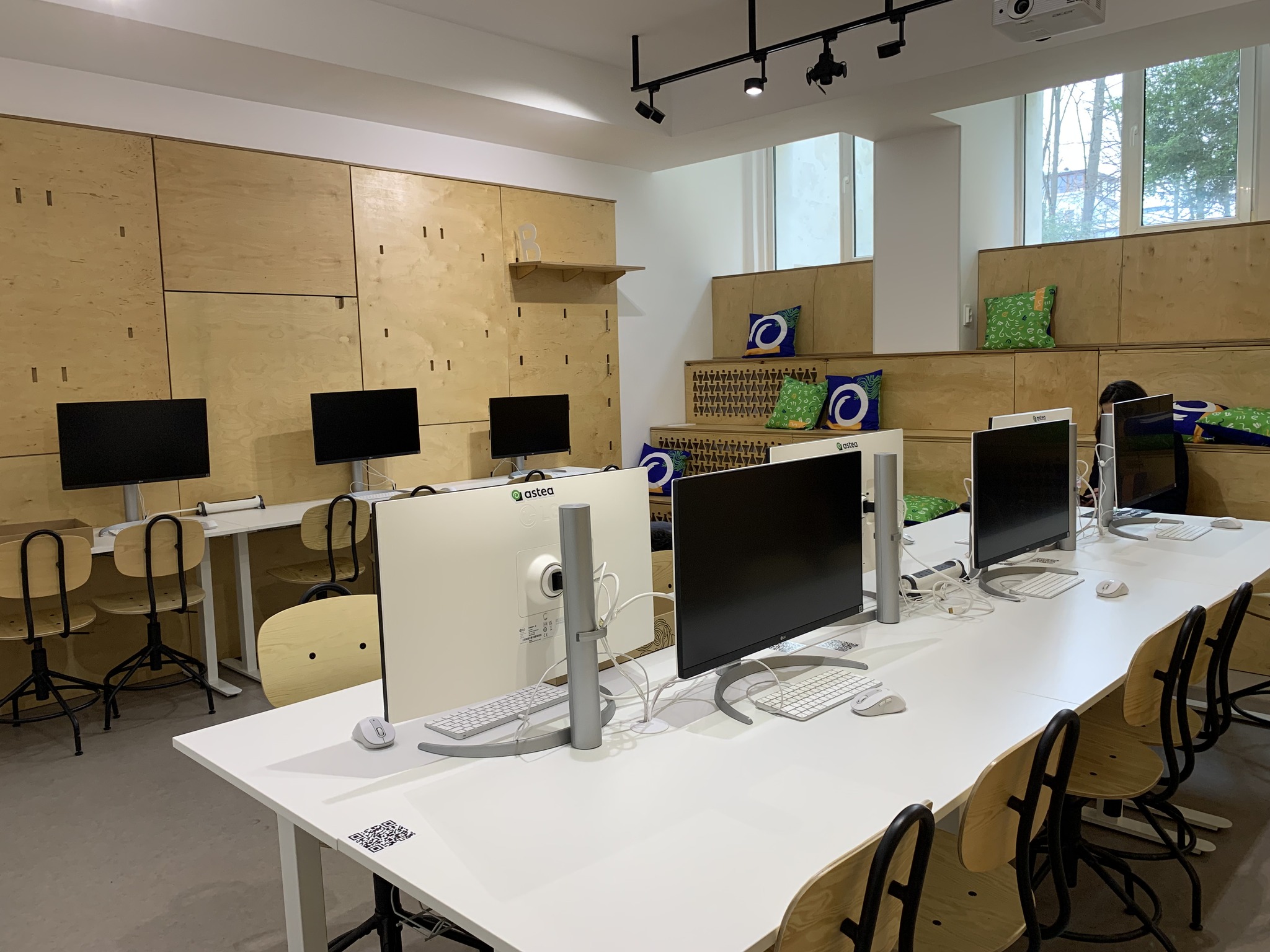Nora talks about what is it like to combine science and teaching at FMI with working at Astea. To find out if it is hard and what does it take keep on reading.

Introduce yourself, please.
Nora Angelova, 30.
How did you start working at Astea?
I was directed to Astea by my teachers. They considered that for someone willing to develop in the field of Informatics and Computer Science, Astea is the right place that would provide me with a range of opportunities. Back then, I was a student and an assistant at Sofia University’s Faculty of Mathematics and Informatics. Later on, I was officially invited to join the company, and I accepted. Joining Astea was like joining one big family. This is how I feel about it even nowadays.
How do you like your work at Astea today?
Working in the IT sector is rather dynamic, intensive, interesting, and requires a variety of complex skills. Working at Astea is all of that, multiplied by a factor of two. Throughout the years I have worked on numerous projects in diverse teams, with various customers, requirements, and technologies. All this provides one with different points of view regarding a particular situation. To sum up, this work offers the opportunity for developing expertise.
Which is the most challenging problem you have faced in your workflow?
I don’t think that problems can be defined as challenging or not. Moreover, I do not like words like “challenging” and “problem”. Every “problem” is just an opportunity to show your style of thinking in order to achieve better results. Everything can be challenging if you are aiming for perfection and for sure I am that kind of person. In general, I think that when working with a customer or within a team, the most interesting task is to learn how to collaborate – to find the balance between productivity, attention to detail and communication, and, most importantly, to create a peaceful and pleasant atmosphere. Many people may consider it strange and unimportant, but I believe that the most important aspect of the job is to turn it into a source of pleasure, to make people feel calm, to trust each other and to have the confidence to keep progressing. Being able to establish such an environment would result in good communication, stress reduction, improved performance, and product quality, unlike any deadlines or priorities, because all people share a common goal – to do something good together.
You have been recently promoted to Associate Professor. How do you manage to combine your job at Astea and university lecturing?
The simple answer to this question is hard work. Actually, it’s much harder than it seems. Both jobs complement each other almost perfectly, and each of them contributes to the development of the other one. The difficulty comes from the fact that both require complete commitment. It is impossible to work with students and not to give a hundred percent of yourself. Likewise, it is impossible to know that your colleagues and clients depend on you, and not give a hundred percent of yourself here as well. The same holds for research work. The major advantage is that when you are doing more things at a time, especially things in the same field, you have the opportunity to get diverse experience, to view things in action, to apply various methodologies and models, and to be much more flexible. This way, I have the opportunity to develop new algorithms, to search for the best ways to present them to my students, to see how they get implemented in practice and on a team level, and to get all the accumulated knowledge used back along the chain. Thus, one develops much greater work capacity and has the opportunity to generate many more ideas because of the opportunity to switch between different tasks and responsibilities. It is no coincidence that some of the largest global companies in the sector allow their employees to use 20% of their working time for things not directly related to their jobs, or to programming at all.
Which is your favorite technology?
I don’t have one. I think that technologies are just tools that allow you to fulfill your ideas in the best possible way. You can use the most appropriate one depending on the goal set. I believe that programming should not be interpreted as just writing code but as a form of art. The code reveals the way a programmer thinks. Someone once said that many people may use cement in construction works, but only a few would use it for making sculptures. It is the same with technologies and code writing.





